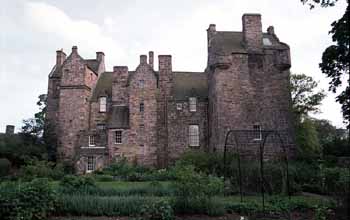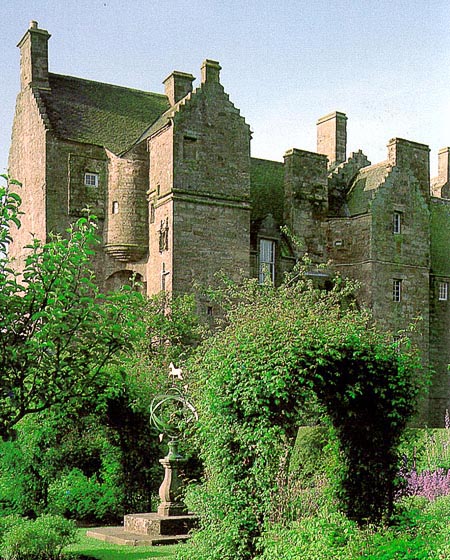The first legitimate mention of Kellie was in the reign of David I, although MacBeth was Thane of Kellie. Later, it was held by an illegitimate son of King William the Lion, in the name of his grandmother Ada, countess of Kellie (mother to King William and Malcolm IV.) By 1266, the lands (and subsequent fortifications such as Kellie) were owned by the Siward family, who were descended from the Siwards who assisted Malcolm Canmore win the crown from Macbeth. Sir William Siward supported England during the wars of independence, forfeiting his lands afterwards as a result, the lands passing through ‘Lady Kellie’, Helena Siward, to the Oliphant family in about 1360.

Kellie Castle
However, with the chiefly seat situated at Aberdalgie in Perthshire, the Kellie properties (in Fife) passed to a younger son branch who, from then on, became the Oliphants of Kellie. It was Walter Olifard who built the original tower which now makes up the first two floors of the North tower. The castle passed back to the chiefly branch in 1560. An additional tower, built some distance from the original tower, which now makes up the East end of the castle, was built in 1573 by the 4th Lord Oliphant. High up on the south wall are the initials of his wife, Margaret Hay, (daughter of the powerful Earl of Errol.) It is believed that this tower was built by the 4th Lord as a jointure-house (a property set aside for the wife after the husband’s death) for Margaret. The new main block and upper blocks of the castle were built in the early 17th century by the 4th Lord. This Laurence, 5th Lord Oliphant, dissipated all of the Oliphant estates in Scotland, the lands in Fife being no exception. In 1617, Laurence sold Kellie to Thomas Erskine, who became the first Earl of Mar and Kellie. The castle was kept in that family, eventually devolving to the 9th Earl.

Kellie Castle at present
Kellie was abandoned in 1829. It was later leased and restored by James Lorimer, who passed it to his son Sir Robert Lorimer, the renowned architect, who proceeded to add his own touch to the castle (some of the furniture still found in the castle is of his work.) It eventually came into the hands of the National Trust of Scotland. Kellie is a tourist attraction today and is open to the public. It is known as one of the finest castles in Scotland.

Kellie Castle is known today for, among
other things, it’s magnificent garden







